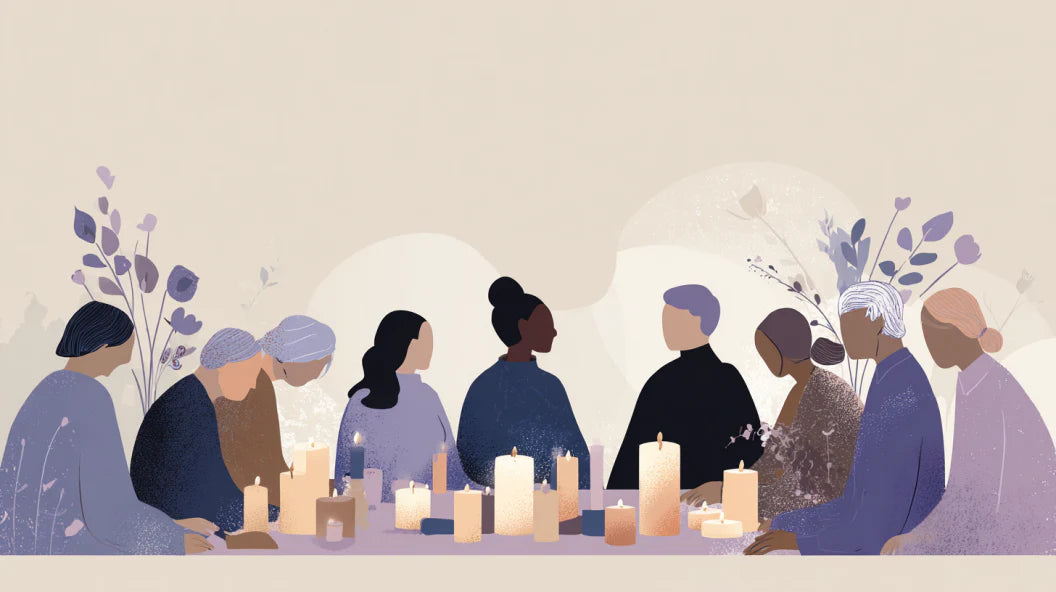
What Is a Vigil for Death: Meaning, Practice, Etiquette
On this page
A vigil for death serves both as a tribute and a practical way to remember someone. It brings people together to share stories, light candles, and reflect on memories, offering comfort and connection beyond the structure of a funeral.
To fully understand the significance of vigils, let’s explore their meaning, cultural roots, and the practices that make them powerful experiences for grieving communities.
What Is a Vigil: Significance and Symbolism
Death vigils hold different meanings across cultures but share common purposes: honoring the deceased, providing comfort, and offering a space for goodbyes. Unlike formal funerals, vigils allow more personal and flexible expressions of grief.

For example, in Jewish traditions, Shmirah refers to keeping watch over the deceased until burial — a practice rooted in respect and spiritual care. Meanwhile, Irish wakes often celebrate life with music and storytelling, creating a balance of mourning and remembrance.
What Happens at a Vigil?
Vigils vary in tone and structure depending on cultural and personal choices. They may be quiet and contemplative, or lively and celebratory like Irish wakes. Common elements include prayers, readings, shared memories, and music — all aiming to foster emotional release and community support.
How to Plan a Vigil for Death
Planning a vigil involves considering location, timing, traditions, and the family’s wishes. Funeral directors or spiritual leaders can provide guidance to ensure the event is respectful and meaningful. Decisions typically include who will lead prayers, speak, or contribute music and readings.

When to Organize a Vigil
The timing depends on family needs, legal requirements, and body preparation. Unexpected deaths, organ donation, or other circumstances may cause delays. The goal is to find a balance between timely closure and allowing loved ones to gather.
Places to Hold a Vigil
- Church or funeral home — A formal setting, often guided by clergy or religious leaders.
- Family home — An intimate environment fostering comfort and shared reflection.
- Outdoors — Natural settings like parks or gardens that provide peaceful surroundings.
The choice of location reflects personal preferences, cultural traditions, and the atmosphere desired.
Types of Vigils
Different forms of vigils include:
- Formal vigils — Structured ceremonies in religious or community spaces.
- Informal vigils — Family-centered gatherings in homes.
- Candlelight vigils — Symbolizing unity, hope, and remembrance.
- Walking vigils — Moving together between locations for reflection.
- Bedside vigils — Sitting with loved ones in their final moments.
Things to Do During a Vigil
Activities help shape the experience and bring comfort. Options include:
- Readings — From scriptures, poems, or personal writings.
- Music — Songs or live performances meaningful to the family or deceased.
- Prayers and meditation — Offering peace and spiritual reflection.
- Creative expression — Journaling, drawing, or sharing written tributes.
- Moments of silence — Allowing collective stillness and reflection.
- Storytelling — Sharing anecdotes that celebrate the person’s life.
Combining these elements makes a vigil both healing and memorable.

Conclusion
Vigils are a deeply human response to loss, providing connection, comfort, and space for remembrance. Whether solemn or celebratory, they help loved ones say goodbye while honoring the life of the departed in a meaningful way.
- Choosing a selection results in a full page refresh.
- Opens in a new window.
